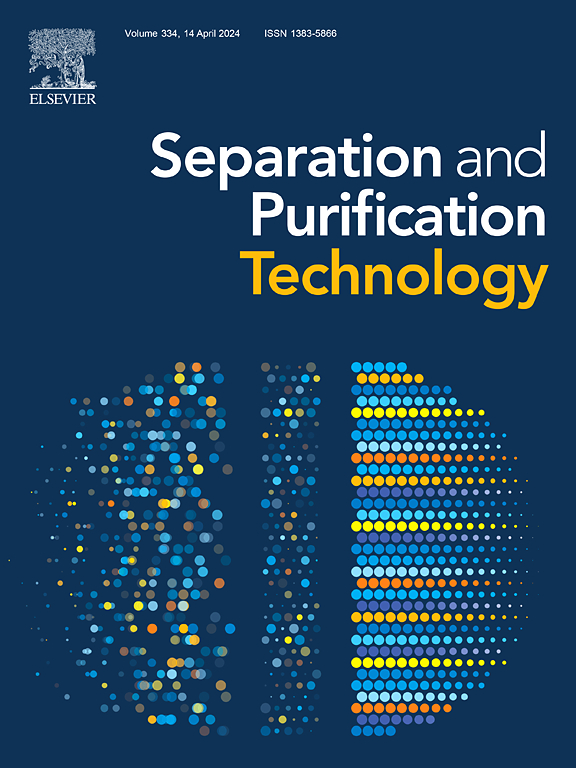Interfacially Polymerized zwitterionic Thin-Film composite membranes with AEPBS for enhanced pervaporation performance in alcohol dehydration
IF 8.1
1区 工程技术
Q1 ENGINEERING, CHEMICAL
引用次数: 0
Abstract
The development of high-performance membranes for pervaporation applications requires the precise design and optimization of surface functionality to enhance water selectivity and transport efficiency. In this study, thin-film composite (TFC) membranes were modified using zwitterionic N-aminoethyl piperazine butane sulfonate (AEPBS) to improve separation performance. The functionalization process involved a two-step reaction: interfacial polymerization of polyethyleneimine (PEI) with trimesoyl chloride (TMC) followed by the covalent grafting of AEPBS. Fourier-transform infrared (FTIR) and X-ray photoelectron spectroscopy (XPS) confirmed the successful incorporation of zwitterionic sulfonate groups, significantly altering the membrane surface chemistry and enhancing hydrophilicity, as evidenced by reduced water contact angles. Morphological analysis revealed an increase in surface roughness and layer thickness, attributed to the functionalization process. The AEPBS-modified membrane achieved exceptional pervaporation performance, with a permeation flux of 2267.84 ± 138.09 g/m2·h and a separation factor of 1364.47 during alcohol dehydration using 70 wt% isopropanol (IPA) feed at 25 °C. Systematic variation of AEPBS concentration and grafting time revealed optimal conditions at 0.2 wt% AEPBS and 1-minute grafting, achieving the highest pervaporation separation index (PSI) of 3.09 × 10⁶ g/m2·h. The membrane demonstrated robust performance under diverse operating conditions, including varying feed temperatures and water concentrations, and maintained consistent separation efficiency during 168 h of continuous operation. These findings validate the potential of AEPBS-modified membranes for industrial applications, particularly in energy-efficient alcohol dehydration processes.

求助全文
约1分钟内获得全文
求助全文
来源期刊

Separation and Purification Technology
工程技术-工程:化工
CiteScore
14.00
自引率
12.80%
发文量
2347
审稿时长
43 days
期刊介绍:
Separation and Purification Technology is a premier journal committed to sharing innovative methods for separation and purification in chemical and environmental engineering, encompassing both homogeneous solutions and heterogeneous mixtures. Our scope includes the separation and/or purification of liquids, vapors, and gases, as well as carbon capture and separation techniques. However, it's important to note that methods solely intended for analytical purposes are not within the scope of the journal. Additionally, disciplines such as soil science, polymer science, and metallurgy fall outside the purview of Separation and Purification Technology. Join us in advancing the field of separation and purification methods for sustainable solutions in chemical and environmental engineering.
 求助内容:
求助内容: 应助结果提醒方式:
应助结果提醒方式:


